The Pains and Joys of Growing Soursop (Durian Belanda)
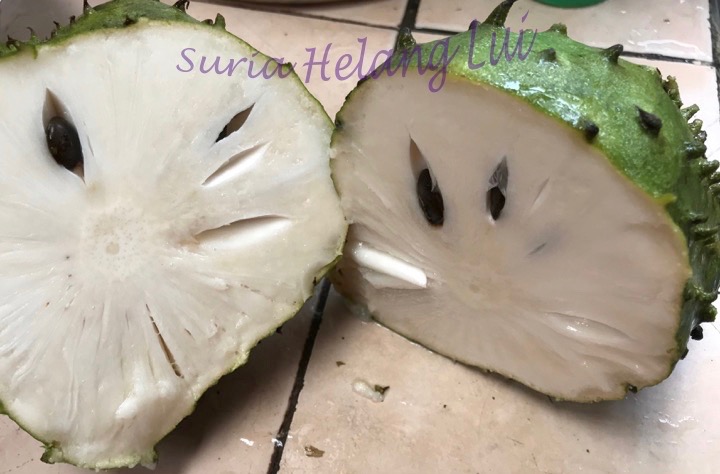 One of the more expensive local fruits we have is the Durian Belanda. Both the fruit and the leaves have good nutritional and therapeutic values. I have been growing the trees for about 7 years now and to date and currently we have 8 trees of various ages ranging from 3 years to 5 years. Many have asked me many different questions hence this article covers my experience and each growers experience can be different.
One of the more expensive local fruits we have is the Durian Belanda. Both the fruit and the leaves have good nutritional and therapeutic values. I have been growing the trees for about 7 years now and to date and currently we have 8 trees of various ages ranging from 3 years to 5 years. Many have asked me many different questions hence this article covers my experience and each growers experience can be different.
Although it is a tree that can grow to over 8m in height, the growth can be controlled and it needs a space of a circumference of 2 m. Giving the right conditions and care, it can produce many fruits. Let’s start with the basics: the soil. At the farm, we have different sections with different soil types ranging from high clay content to rocky and high sand content. We have experimented planting them in various areas and find that it does best is soil that contains a significant amount of sand (around 30%) and does worst in high clay content soil. It needs soil with good drainage with good content of organic matter to a depth of at least 1 m. If you are living in a development area that was developed in the last 10 years, and you find that your tree keeps dying, check the soil. Many of these development had used construction and other wastes as landfill.
This tree is well suited to our tropical climate with frequent rain with some dry periods. In young trees, it will need to be watered. Once a tree has established itself, it will no linger require manual watering. The roots tend to spread out relatively neat the surface of the tree and the root doesn’t grow as deep as other trees of similar height and girth. It does not like for its roots to be disturb hence for this reason, we refrain from planting any plants around the base and keep the grass and weeds controlled by cutting the down to surface level. This serves a dual purpose: adding organic matter which as it decomposes adds nutrients to the soil and to keep the soil covered to help retain moisture.
Our farm is totally organic so we do not use any chemical pesticide, herbicide or fertilisers. To this end, the environment of the farm is such that we plant many different types of plants and trees that encourages many varieties of insects, some of which are predators to insects that attack the leaves and fruits. This helps to keep the trees relatively free of insect attacks. Having a healthy tree also helps it fights these attacks and diseases.
To support the growth of the tree, we address the soil health as well as the plant health. In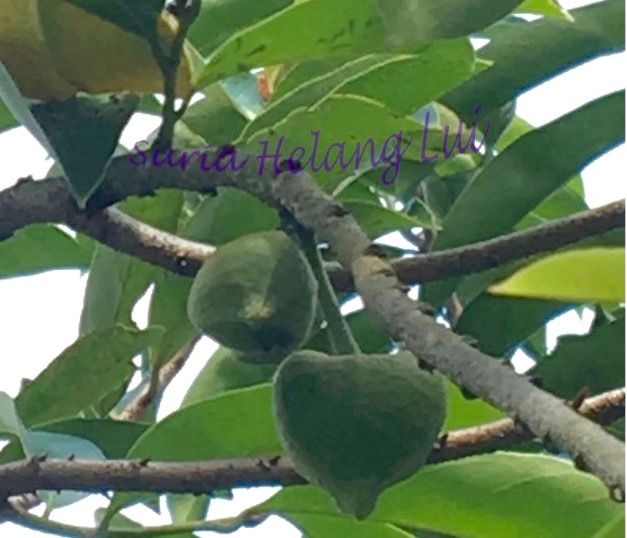 order to ensure that we have the necessary
order to ensure that we have the necessary
nutrients to support flowering and fruiting, we use goat and chicken manure fertilisers. We also use diluted fish amino acids mixed with EM-1 on a quarterly basis. The tree can flower year-long so keeping it well-fed is essential. The bell-shaped buds are green in color with the point facing downwards. There can appear singularly or in multiples.
As the bud develops, you will see it turn to a pale yellow flower with petals.
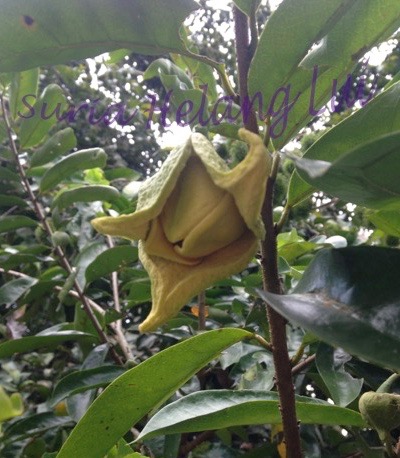 An interesting aspect of the soursop flower is that it blooms at night hence pollination occurs at night. Once the outer petals are open (as in the picture), it will bloom that night. At the farm, our environment encourages night insects as well as there is often night breezes which contribute to a good pollination rate. We do not hand pollinate.The presence of wind and night insects is important to increase the success of pollination. The degree of success of the pollination will also affect the fruit size and shape.
An interesting aspect of the soursop flower is that it blooms at night hence pollination occurs at night. Once the outer petals are open (as in the picture), it will bloom that night. At the farm, our environment encourages night insects as well as there is often night breezes which contribute to a good pollination rate. We do not hand pollinate.The presence of wind and night insects is important to increase the success of pollination. The degree of success of the pollination will also affect the fruit size and shape.
Once the petals have fallen, you will see a stub-like with :needles” left. Some have mistaken this as the dried-up flower and removed it. At this stage, it is still unclear if pollination is successful so it is best to leave it. Over the next few days or a week, you will see the beginnings of the fruit if pollination is successful, It doesn’t look like the fruit yet but a brown mass of pins.
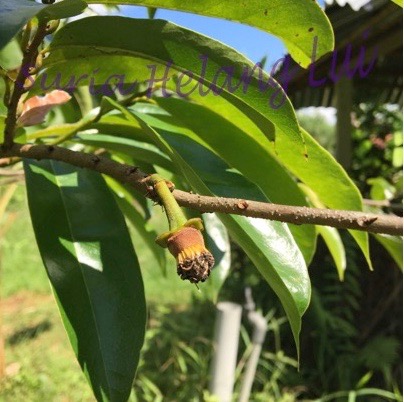
From this stage, it will take several weeks before you begin to see the fruit in a shape more familiar to the mature soursop. You can see that the fruit will h
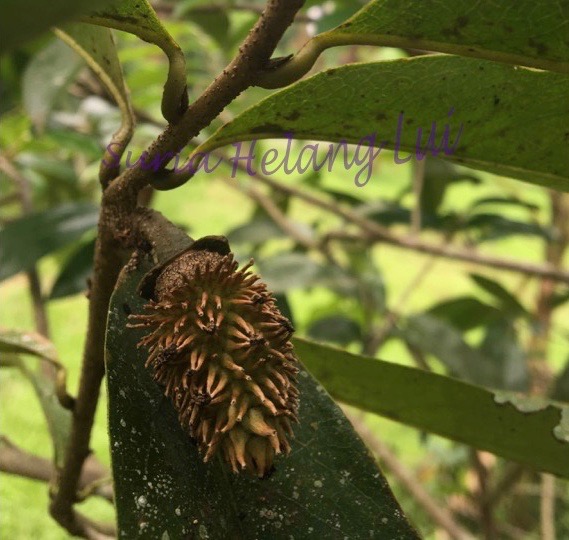
ave a nice shape and size when mature from the shape the fruit “bud” is as well as the number of “needles” present. Even when it is flowering and fruiting, we continue to fertilise the ree in accordance with our schedule. We also on a bi-annual basis, spread a handful of coarse salt around the circumference of the tree about 1 m away from the base of the trunk. Apart from supplying additional minerals, it also serves as an “antibiotic” against harmful bacteria. 
In general, the fruit is heart-shaped or oval. The fruit is ready to harvest when you see the needles are well-spaced apart and pointing horizontally an
d the skin of the fruit has smoothen out. The fruit will feel firm. At this stage, it will be sweet and sour with lots of juices. This is, to me, the perfect time to harvest if you would like to eat it in slices. I tend to just cut it into the slices, revealing the creamy-white flesh inside, without peeling and eat the flesh off, leaving the seeds and skin. Once it has reached this stage, it will go soft within days but the intensity of the sweetness will increase and the flesh will still remain creamy-white. However, it will then be suitable only for making blended drinks.
Often, when you buy at the market, the fruit will still be hard. Do check that the fruit have the “needles” almost horizontal and widely spaced apart with smooth skin in between. This will indicate that the fruit was mature enough when harvested. Often, people will wait for their store-bought fruit to soften and when they cut it, they find that the flesh inside is brow/black indicating the fruit has rotted. This could be due to the preservatives applied post-harvest to keep the fruit looking nice on the outside but it has started to rot on the inside, Hence, by the time you feel the fruit has softened, it has rotted all the way through.
PS>> This will be one of the fruit trees that I will detail out from planting to harvesting to what you can do with it more in my book. Not sure when I will complete it though 🙂

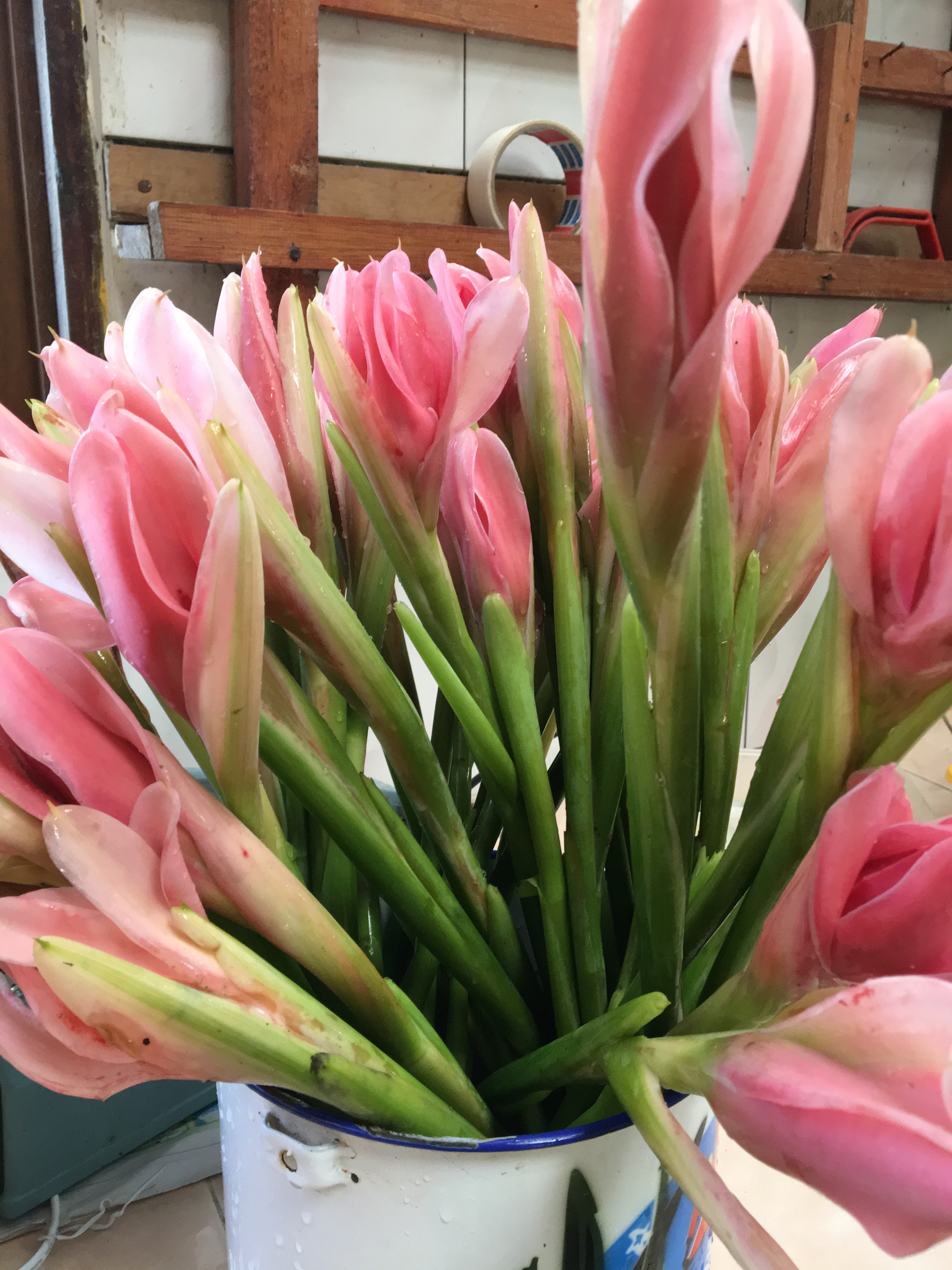 are a few colours – red, white and pink – with variation in shades dependent of soil and nutrients. I have found that there are several factors in having a healthy torch ginger plant and having it flower. The first factor is space. This plant needs room to spread as the leaves and flowers grow on individual stalks/stems from the rhizome. Hence in order to have more flowers, the rhizome needs to be able to grow horizontally from which the stems/stalks will emerge.
are a few colours – red, white and pink – with variation in shades dependent of soil and nutrients. I have found that there are several factors in having a healthy torch ginger plant and having it flower. The first factor is space. This plant needs room to spread as the leaves and flowers grow on individual stalks/stems from the rhizome. Hence in order to have more flowers, the rhizome needs to be able to grow horizontally from which the stems/stalks will emerge. , decades or even longer, of natural decomposition of natural organic matter being added to the soil, hence this is the type of optimum soil condition. Hence, it doesn’t do well in heavy clay soil. You can always improve the soil condition by adding sand as well as organic matter.
, decades or even longer, of natural decomposition of natural organic matter being added to the soil, hence this is the type of optimum soil condition. Hence, it doesn’t do well in heavy clay soil. You can always improve the soil condition by adding sand as well as organic matter. Being flowers, there is a limited time before it decays and becomes no longer consumable. The best way that I have found to retain all the flavour and nutrients is to dehydrate them. I do not sun-dry them or expose them to the open air surroundings as I do not want it to be contaminated not make the drying process weather-dependent. The petals are separated before placing them in a dehydrator to dry. This way, it can last for at least 6 months and if stored correctly, longer. For the purposes of dehydrating, I use full-bloomed flowers – the stage before it starts forming the seed pods. The flavour is highest at this time. It can be stored in air-tight containers at room temperature and be readily available for the laksa, asam pedas and many other dishes. You can also add the dehydrated petals to your hot bath water instead of the fresh petals.
Being flowers, there is a limited time before it decays and becomes no longer consumable. The best way that I have found to retain all the flavour and nutrients is to dehydrate them. I do not sun-dry them or expose them to the open air surroundings as I do not want it to be contaminated not make the drying process weather-dependent. The petals are separated before placing them in a dehydrator to dry. This way, it can last for at least 6 months and if stored correctly, longer. For the purposes of dehydrating, I use full-bloomed flowers – the stage before it starts forming the seed pods. The flavour is highest at this time. It can be stored in air-tight containers at room temperature and be readily available for the laksa, asam pedas and many other dishes. You can also add the dehydrated petals to your hot bath water instead of the fresh petals.
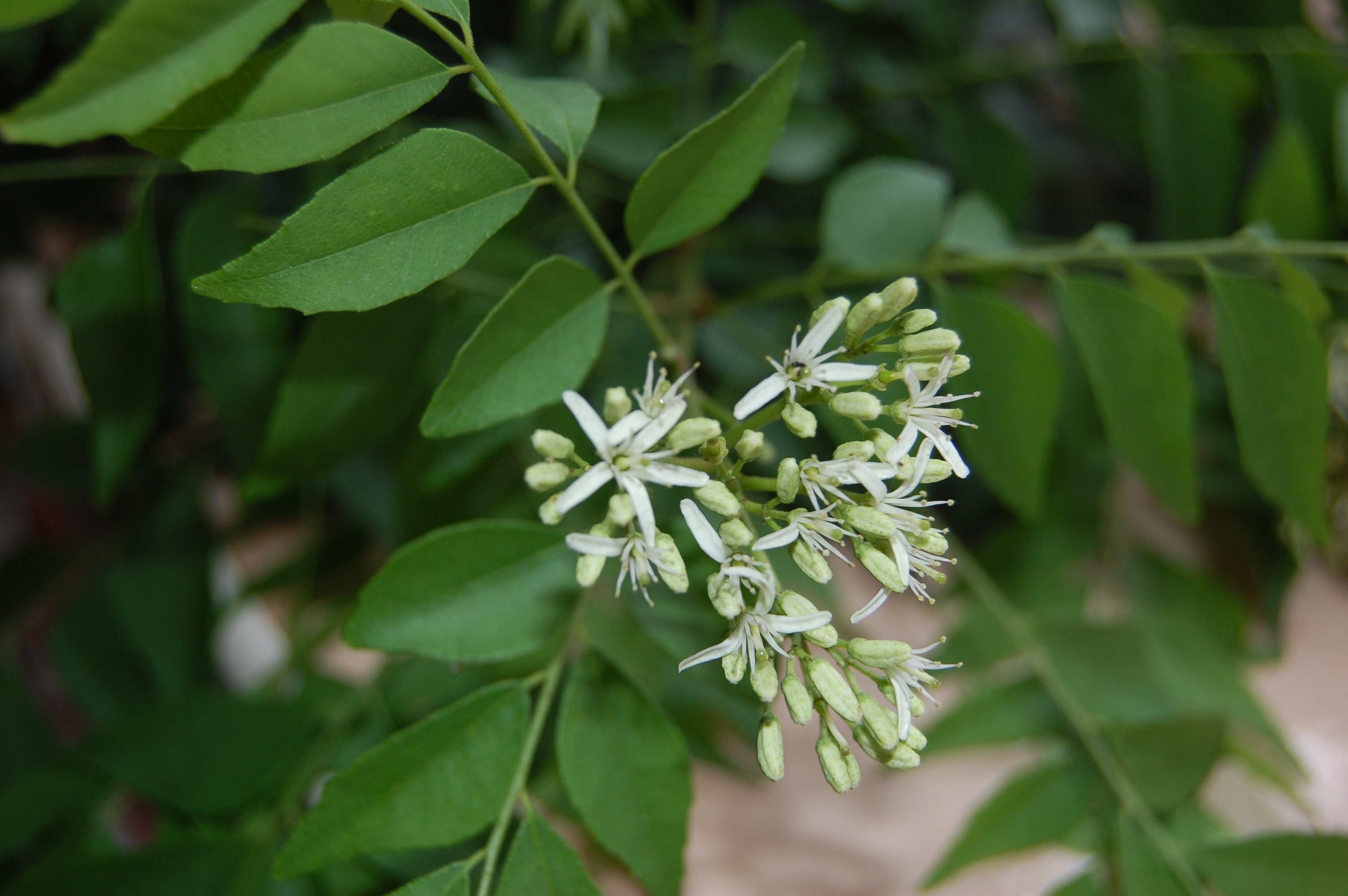 l curry leaves are added to it. To make fried chicken tastier, try adding a few curry leaves to to the frying oil so the aroma and taste gets infused into the chicken. But did you know that the young shoots of the curry leaves can be eaten as ulam or added into salads? You can also infuse edible oil with dehydrated curry leaves and have the aroma in taste in it which you can then use to create other dishes.
l curry leaves are added to it. To make fried chicken tastier, try adding a few curry leaves to to the frying oil so the aroma and taste gets infused into the chicken. But did you know that the young shoots of the curry leaves can be eaten as ulam or added into salads? You can also infuse edible oil with dehydrated curry leaves and have the aroma in taste in it which you can then use to create other dishes. store and have readily available as well as making it easy to transport. We have turned it into a product within our dehydrated herbal range. It is packed in a resealable pouch making it easy to transport as well as store. Each pack is RM 15 and available via mail order.
store and have readily available as well as making it easy to transport. We have turned it into a product within our dehydrated herbal range. It is packed in a resealable pouch making it easy to transport as well as store. Each pack is RM 15 and available via mail order.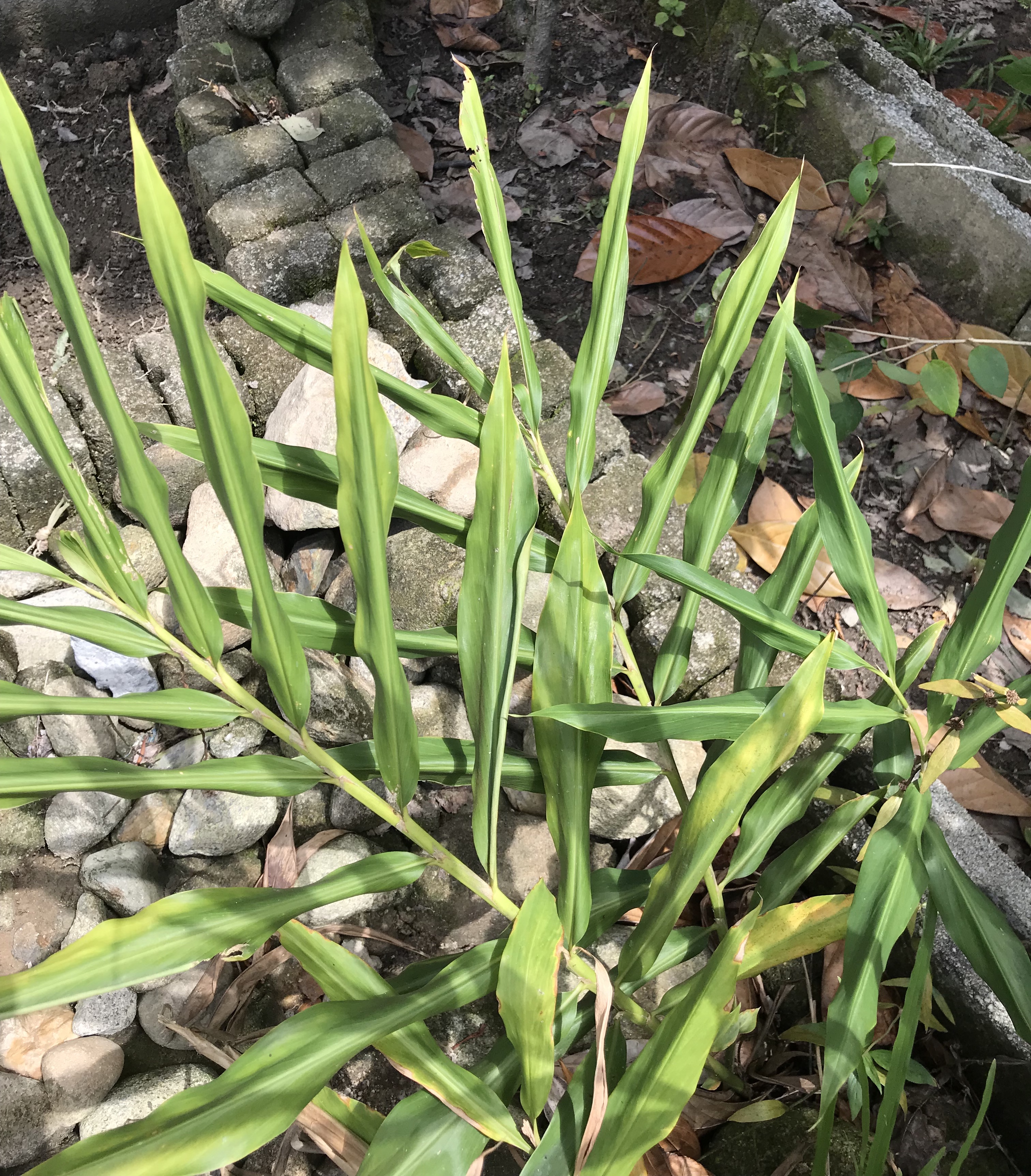
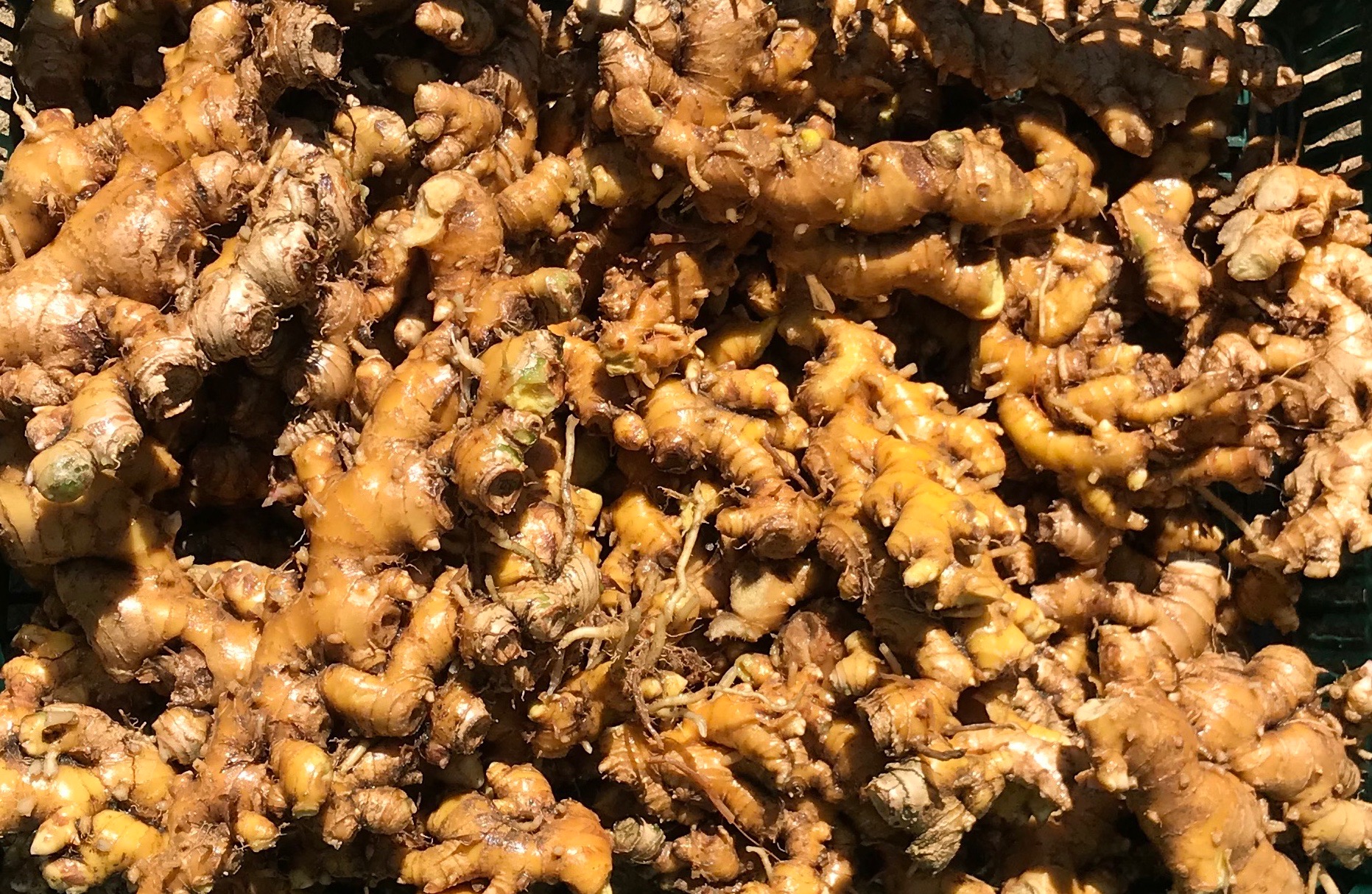 The outer skin is reddish-brown with the flesh a cream color. The flesh has a less pungent ginger aroma. As with many of my rhizomes, it is not possible for me to consume them all when it is harvested so I will dehydrate them and convert them to powder form,retaining maximum nutrients possible, enabling me to store it for a longer period of time and available for use at any time. What is interesting is when you dehydrate the finger and mill them to a powder, the resulting color is a pale slightly green-yellow.
The outer skin is reddish-brown with the flesh a cream color. The flesh has a less pungent ginger aroma. As with many of my rhizomes, it is not possible for me to consume them all when it is harvested so I will dehydrate them and convert them to powder form,retaining maximum nutrients possible, enabling me to store it for a longer period of time and available for use at any time. What is interesting is when you dehydrate the finger and mill them to a powder, the resulting color is a pale slightly green-yellow.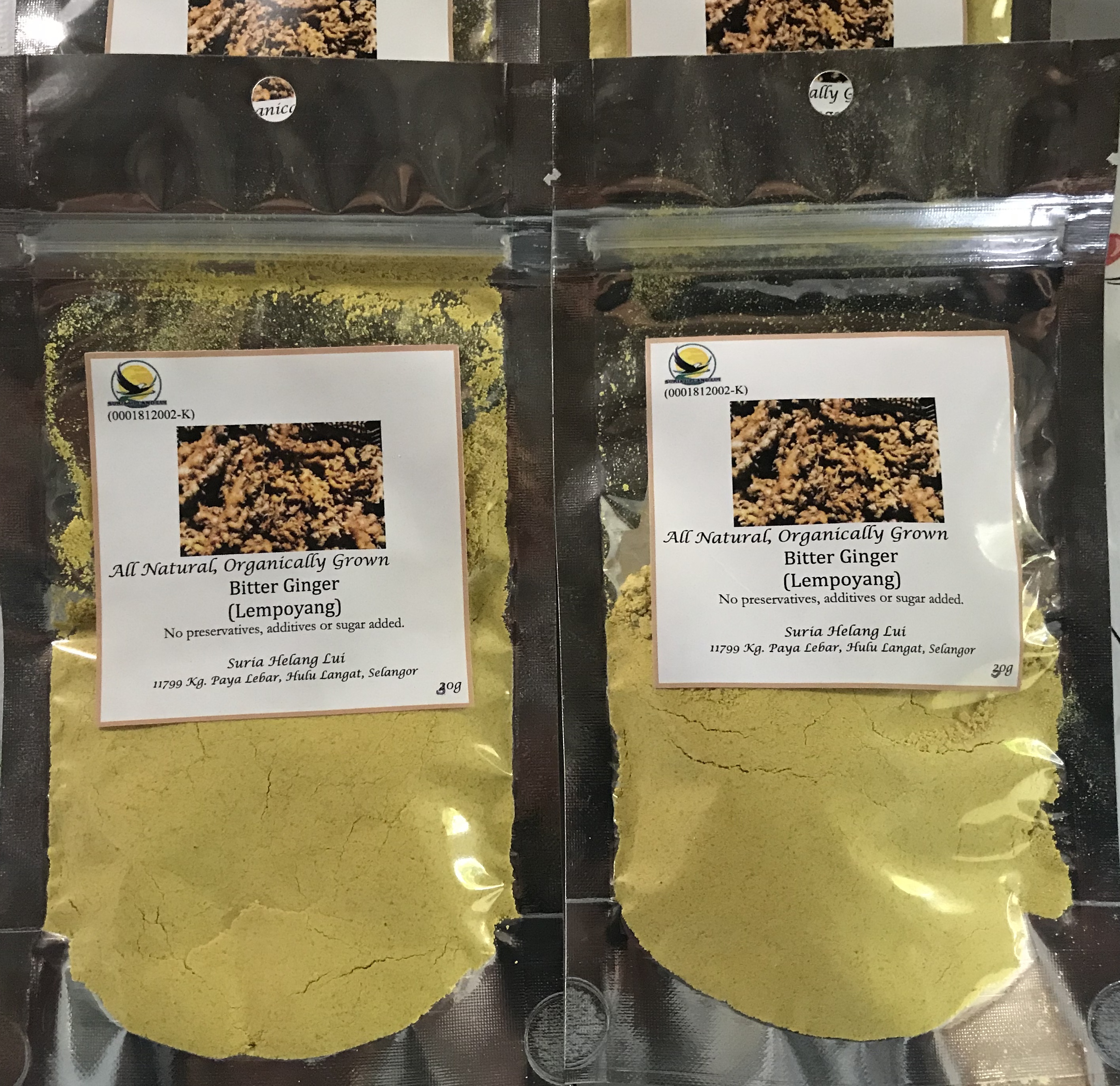 (Bitter ginger), a new addition to our product line and will continue to grow them. It is packed in packs of 30gm of pure bitter ginger with no additives or preservatives added, As with our other products, it is produced from bitter ginger grown organically at our farm. It is available via mail order.
(Bitter ginger), a new addition to our product line and will continue to grow them. It is packed in packs of 30gm of pure bitter ginger with no additives or preservatives added, As with our other products, it is produced from bitter ginger grown organically at our farm. It is available via mail order. Pisang Emas is often sought after as THE banana to eat raw here in Malaysia. The size and taste makes it a great choice to add to your breakfast, either on its own or sliced to add to your bowl of cereal or simply pan-roasted. Often, sellers claim that they are selling pisang Emas when it is actually pisang lemak manis to make it more marketable. Often, the buyer doesn’t know but is only aware that Pisang Emas is great so when they are told it is Pisang Emas, they buy it and then continue to think that what they bought is Pisang Emas when it is something else. They then tell others that is Pisang Emas and the misinformation continues. This really bugs me……hahahaha…..
Pisang Emas is often sought after as THE banana to eat raw here in Malaysia. The size and taste makes it a great choice to add to your breakfast, either on its own or sliced to add to your bowl of cereal or simply pan-roasted. Often, sellers claim that they are selling pisang Emas when it is actually pisang lemak manis to make it more marketable. Often, the buyer doesn’t know but is only aware that Pisang Emas is great so when they are told it is Pisang Emas, they buy it and then continue to think that what they bought is Pisang Emas when it is something else. They then tell others that is Pisang Emas and the misinformation continues. This really bugs me……hahahaha….. So what is Pisang Emas. First, they are not big with the size being under 6cm in length. We don’t normally go to the market and bring a measuring tape or ruler, so how do we measure? A simple way is to compare it with you pinky finger – you can measure your pinky finger and just remember whether it is 6cm or less.
So what is Pisang Emas. First, they are not big with the size being under 6cm in length. We don’t normally go to the market and bring a measuring tape or ruler, so how do we measure? A simple way is to compare it with you pinky finger – you can measure your pinky finger and just remember whether it is 6cm or less. Once peeled, the fruit itself has a cream yellow exterior with a golden yellow centre. As you can see in the picture, when you slice the fruit, it is all yellow with the golden yellow centre a reflection of its name. No other local banana has this golden yellow centre. It has a very sweet taste and the sweetness tastes like honey.
Once peeled, the fruit itself has a cream yellow exterior with a golden yellow centre. As you can see in the picture, when you slice the fruit, it is all yellow with the golden yellow centre a reflection of its name. No other local banana has this golden yellow centre. It has a very sweet taste and the sweetness tastes like honey.